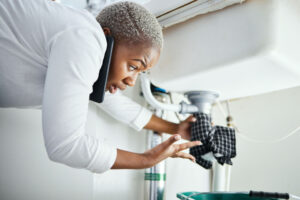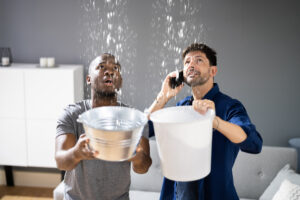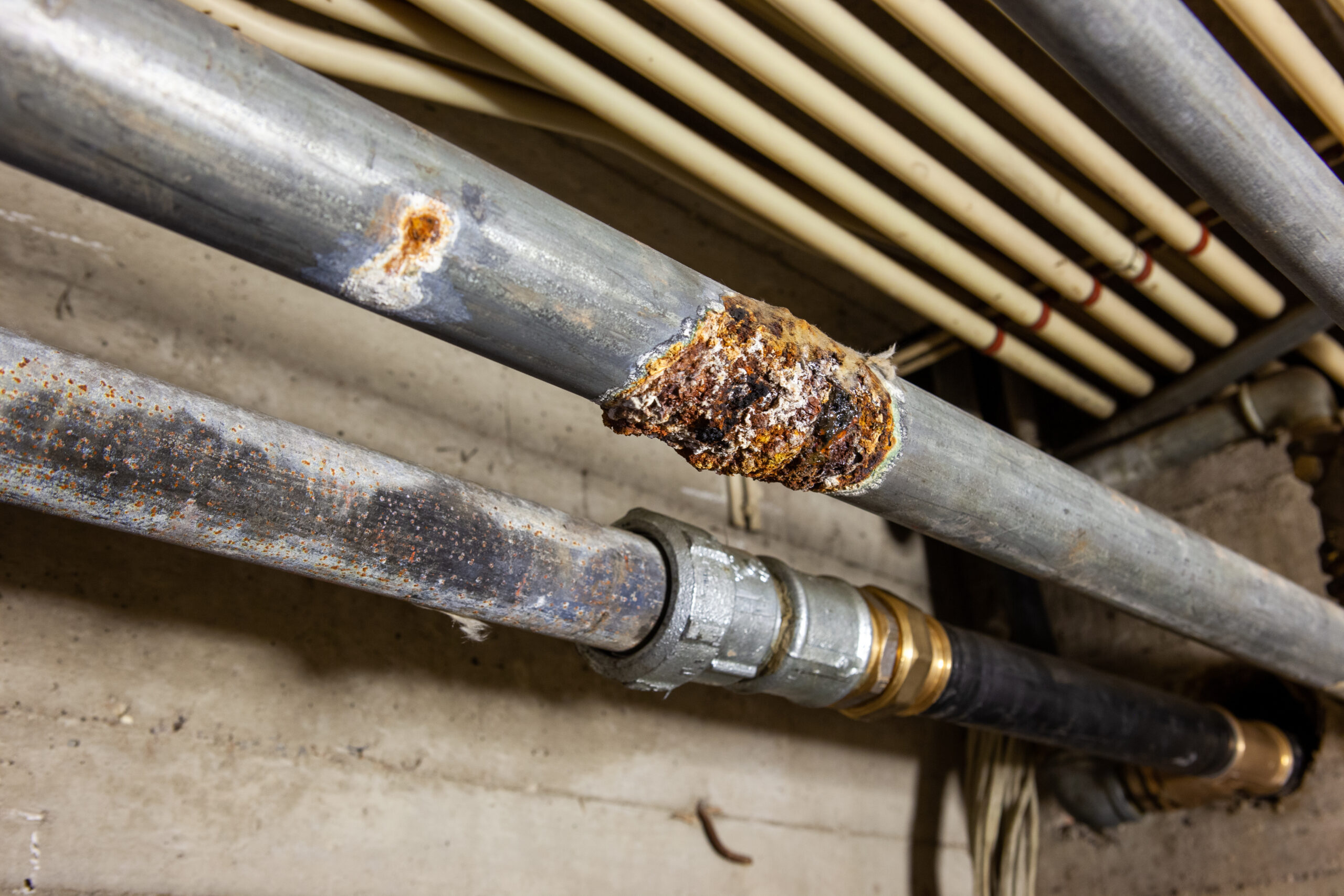Commercial plumbing leaks are nasty sources of water damage that start small but lead to bigger problems over time. It’s critical to fix these leaks, no matter how small they seem. Otherwise, property owners may need to pay for repairs that could have been avoidable.
The Problem With Commercial Plumbing Leaks
Plumbing leaks in commercial buildings can start from anywhere. Yet regardless of their origins, leaks are never a good sign as they can cause a multitude of problems. For one, commercial plumbing leaks can result in higher water bills. The increase may seem negligible in residential property, but it’s a different story when it comes to commercial buildings.
This is because commercial facilities often use hundreds of gallons of water every day. It may come from conducting regular business activities or from the numerous people who simply use water fixtures. When multiplied, these leaks can significantly increase the company’s monthly water bill.
Apart from this, water leaks can result in severe water damage. This might necessitate major repairs that could have been preventable. Moreover, commercial plumbing leaks can threaten the safety of commercial buildings when left unchecked. Water damage can compromise a property’s structural integrity, making it hazardous for the people inside it.
Finding and Fixing Commercial Plumbing Leaks
The lack of preventive maintenance is one of the major causes of building deterioration. One way to avoid this is by conducting a commercial facility plumbing leak inspection of every part of the building. Property owners should familiarize themselves with the most common water leak sources in commercial buildings. They should also know the telltale signs of a water leak.
Are you struggling with water leak detection for commercial buildings? Here’s where to look.
1. Toilets
It comes as no surprise that continuously running toilets can waste a lot of water. Continuously running toilets waste an average of 4,000 gallons of water daily in households. This number increases significantly in commercial buildings, with often multiple toilets within shared and public restrooms.
To check for a malfunctioning toilet, inspect each toilet’s flapper. They should create a solid seal so water doesn’t leak from the tank drain. The fill valve should also shut off properly when the tank is refilled. Otherwise, the toilet will continuously send water to the tank.
Property owners who find a leaky toilet with these problems shouldn’t worry too much because they’re fairly easy to fix. They can replace the broken parts. These parts aren’t expensive and can be found in many local hardware stores. However, replacing them early is best as leaving them there could damage other components. This can result in a total replacement of the entire toilet.
2. Faucet Leaks
 A big part of commercial leak detection is checking all the faucets in the facility. This includes the faucets in bathroom sinks and around the building’s exterior where hoses are connected, if any. Leaky faucets can result in wasted water and can lead to higher water bills.
A big part of commercial leak detection is checking all the faucets in the facility. This includes the faucets in bathroom sinks and around the building’s exterior where hoses are connected, if any. Leaky faucets can result in wasted water and can lead to higher water bills.
Like leaky toilets, malfunctioning or worn-out parts can cause leaky faucets. This is often a result of the dull rubber washers that are no longer watertight. Property owners should replace this component. Otherwise, they risk further damaging other parts and replacing the whole faucet.
3. Sprinklers
Sprinklers are necessary fixtures to protect the property and people from fire. However, they do malfunction and can result in water loss. They may also cause water damage, so it’s essential to include them in any commercial water leak detection inspection.
Property owners should make sure the sprinklers are compliant with the fire code. The pipes and anti-freeze or low-temperature alert systems should also be up to standard. Moreover, property owners should regularly test, inspect, and repair them when there are problems.
4. Water Heaters
Water heaters have a high failure rate, so property owners should replace them before they deteriorate too much. When property owners find small leaks, it’s best to put a drip pan underneath them. Moreover, installing a valve that can automatically shut off the heater is wise.
5. HVAC Systems
 Heating, ventilation, and air-conditioning (HVAC) systems can lead to water loss when they’re not maintained. The cause can be several things, including frozen evaporator coils, clogged drains, and improperly connected pipes.
Heating, ventilation, and air-conditioning (HVAC) systems can lead to water loss when they’re not maintained. The cause can be several things, including frozen evaporator coils, clogged drains, and improperly connected pipes.
It’s important for property owners to follow the manufacturer’s guidelines when it comes to maintenance. This can prevent leaks and water damage. Property owners should replace the broken parts and repair the malfunctioning systems if there’s already a leak.
6. Water Mains
Water mains can deteriorate due to construction activity, extreme weather, soil erosion, or regular wear and tear. Property owners should regularly inspect these. If possible, they should replace any water mains that are more than 60 years old. Iron water mains are also more prone to damage, so property owners should also consider replacing them.
7. Plumbing
A commercial building water leak can come from broken or damaged plumbing systems like pipes and sewer lines. The cause can be several things. For example, cold weather can cause water pipes to burst more easily. Meanwhile, some sewer drains may fail due to wear and tear.
The problem with these leaks is that they’re often within walls or underground, making them difficult to repair and maintain. Moreover, these systems are much more complex to detect than the aforementioned leak sources. However, property owners can detect them by staying alert and looking for the following signs:
- Areas with wet soil or more prolific greenery
- Unstable and spongy flooring
- Bulging walls
- Blistering paint or crumbling plaster
- Loose or cracked tiles
- Grout gaps
- Water stains
- Visible patches of mold
- Musty smells
- Unexplainable water bill increases
While these telltale signs may help, they might not be able to help property owners precisely locate the source of plumbing leaks. For this, it’s best to enlist the help of commercial water leak detection services with specialized equipment. They can locate the source, dig up the pipes, and repair them.
Unfortunately, it will cost a lot to make these repairs. It’s especially expensive and time-consuming when they need to conduct restoration procedures or address problems with mold. Nonetheless, they are necessary if property owners want to avoid long-term water damage.
8. Floors and Ceilings
Leakages in wet areas and bathrooms often result in seepage inside the floors. The leak can make its way into the concrete slab underneath. As a result, patches of water will appear on the ceilings of the lower floors. Property owners who see damp patches on a ceiling should immediately inspect the floor above it.
This is a serious problem that property owners need to address immediately. It’s often a result of a poor quality or failing waterproofing membrane. This can result in structural damage and even mold growth if left unresolved. Repairing this will require professional help, and it will be expensive.
9. Roofs
A commercial roof leak is another serious problem that poses many safety risks. These leaks can corrode the reinforcements of the building. As a result, the concrete may spill, and the soffits may collapse. Property owners can regularly inspect the roofs to check for the following signs:
 Discoloration, water spots, rust stains, and damp patches on walls and ceilings
Discoloration, water spots, rust stains, and damp patches on walls and ceilings- Peeling paint near dormer windows and skylights
- Fascia and soffits that are stained or decayed
- Gutters collecting granules
- Cupping or curling shingles
- Lower building energy efficiency
- Poorer indoor air quality
- A musty odor in the upper floors
- Mold
- Water leaks or seeps into the structure when snow melts or during heavy rainfall
There are many causes, considering roofs are outside the facility. These are the most common ones:
- Extreme weather like heavy snowfall, torrential rains, high winds, and hail
- Inappropriately or improperly installed roofing materials and flashing
- Unsealed or wrongly sealed valleys
- Insecure pipes, drains, and other roof membrane punctures
- Improperly installed or insulated skylights
- Ice dams as a result of extreme weather
- Clogged gutters
- Aged roofing systems that are over 15-20 years old
The right fix will depend on the cause of the roof leak. Once located, the repairs will require professional help and may cost a lot. Moreover, the company’s regular operations likely need to be shut down during repairs.
Fix Commercial Plumbing Leaks Today
Property owners should immediately address any commercial plumbing leaks within the building. This can prevent further damage and ward off any potential safety hazards. As a result, they can protect their business and investment.
Do you need professional help to fix your commercial plumbing leaks? Call Maintenance Specialists Inc. today at 704.405.6000 or contact us online for more information!
RELATED ARTICLES:
- What Is Fire Blocking In Commercial Establishments For?
- Why Is Sealing Air Barriers Penetrations In A Commercial Building Crucial?
- How Valuable Is A Means Of Egress Maintenance Service?

